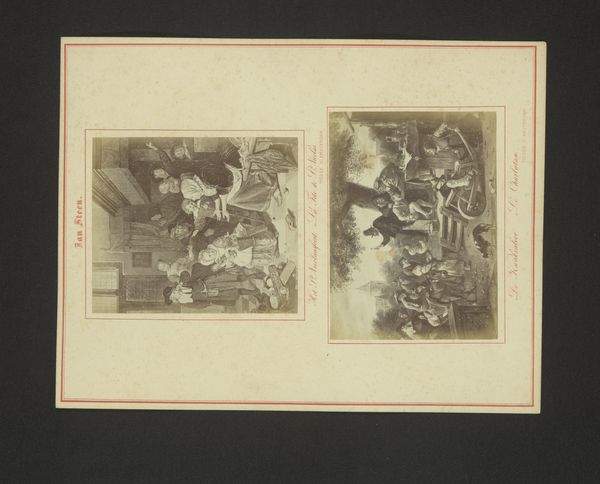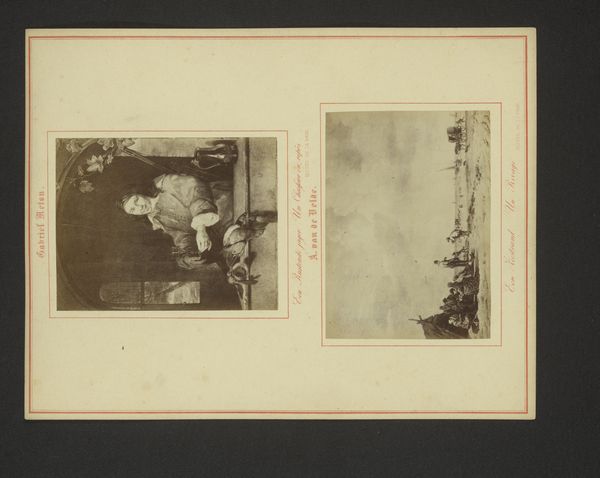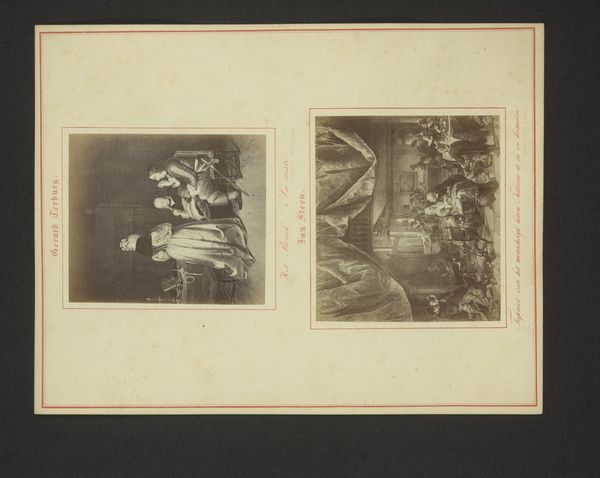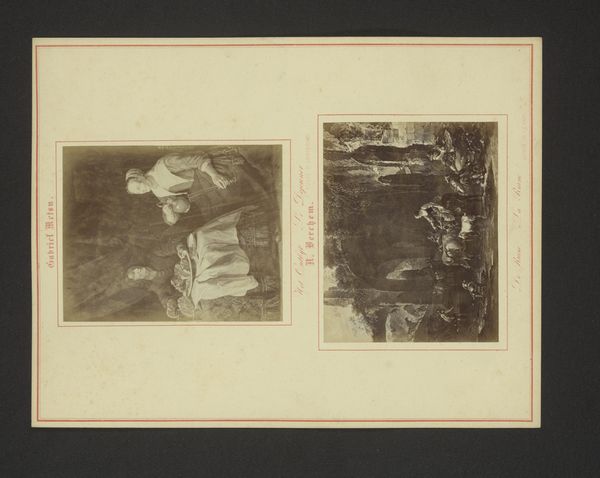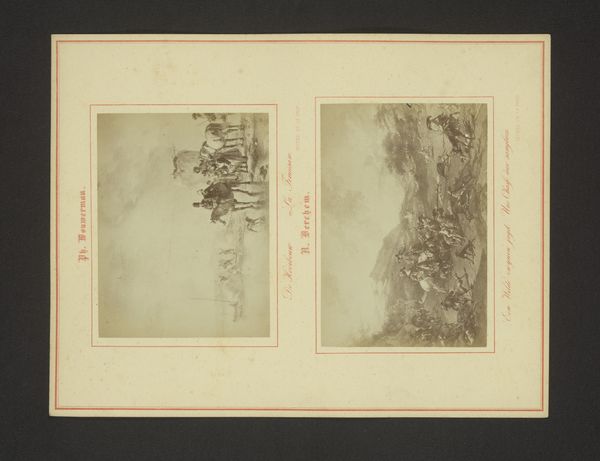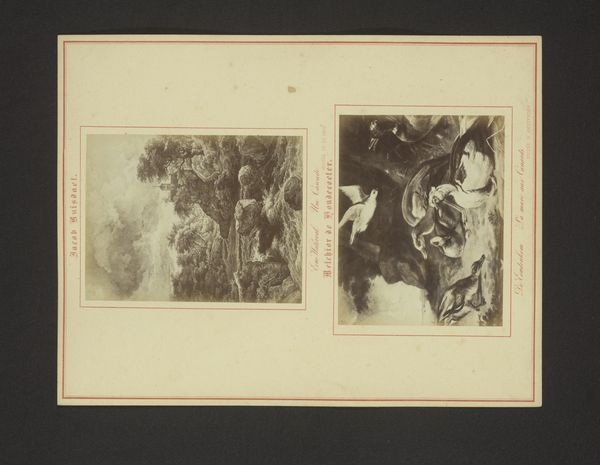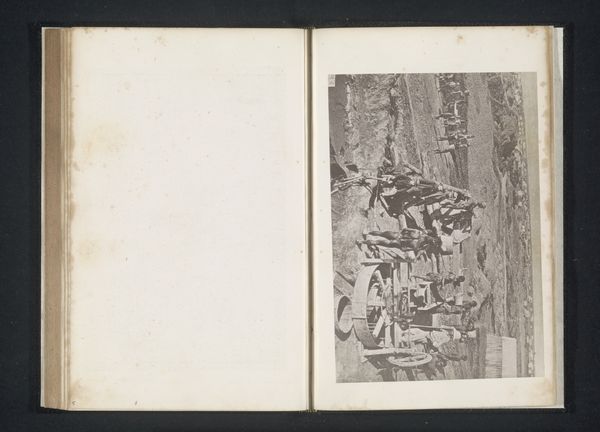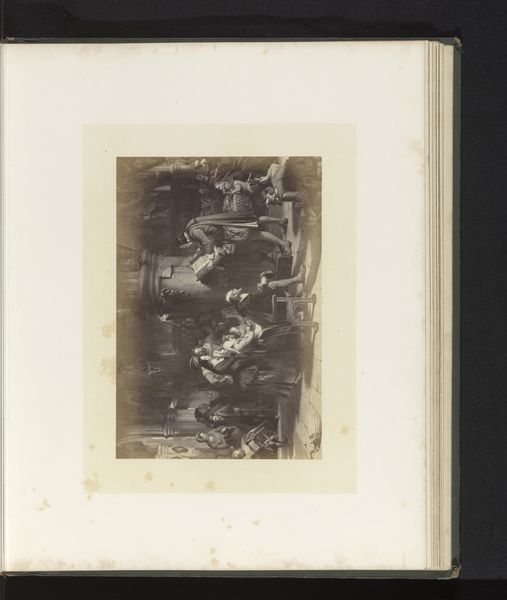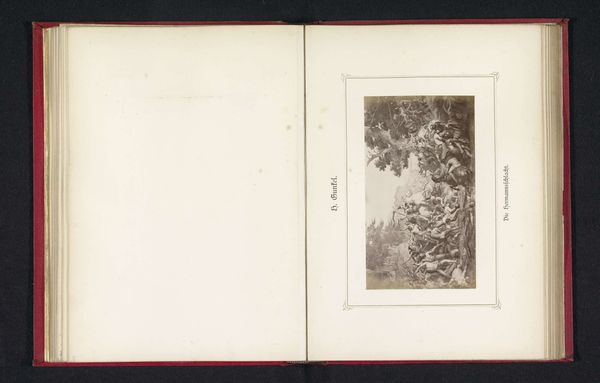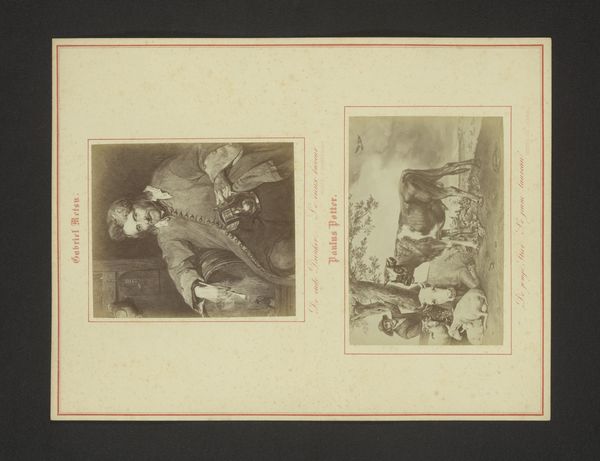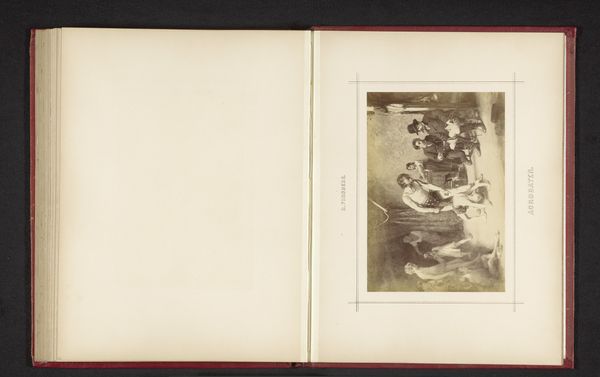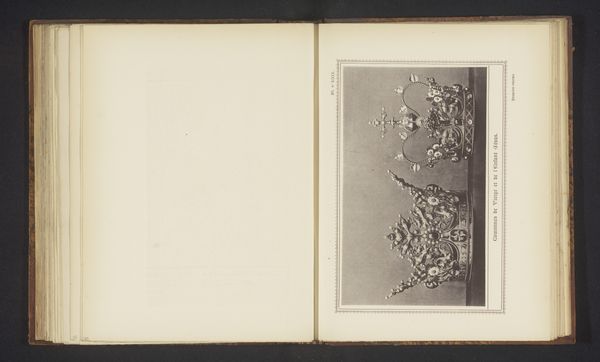
Fotoreproducties van De nachtwacht door Rembrandt van Rijn en van Schuttersmaaltijd ter viering van de Vrede van Munster door Bartholomeus van der Helst c. 1866 - 1874
0:00
0:00
print, photography, gelatin-silver-print
#
portrait
#
weapon
#
dutch-golden-age
# print
#
photography
#
gelatin-silver-print
#
history-painting
Dimensions: height 95 mm, width 123 mm, height 72 mm, width 146 mm
Copyright: Rijks Museum: Open Domain
This photographic reproduction presents Rembrandt van Rijn’s "The Night Watch" alongside Bartholomeus van der Helst’s "Banquet at the Celebration of the Peace of Münster." Note the prominent display of militia men, armed and ready, in both artworks. These figures, symbols of civic duty and protection, tap into a deep-seated human desire for security and communal strength. This motif echoes across centuries, reminding us of the Roman legions, the medieval city guards, and even modern-day soldiers. The phalanx formation, the organized display of weaponry, becomes a visual language of power, a means of instilling confidence—or fear. Consider, for instance, how the raised halberds and muskets in these paintings might evoke similar feelings of awe and trepidation as a medieval knight's lance or a contemporary soldier's rifle. It's as if the collective unconscious recognizes the enduring power dynamics embedded within these symbols of armed might. The transmission of these symbols creates a powerful, deeply resonant force, engaging viewers on a subconscious level. Thus, we see a cyclical progression: symbols resurface, evolve, and take on new meanings, yet their core emotional impact remains remarkably persistent throughout history.
Comments
No comments
Be the first to comment and join the conversation on the ultimate creative platform.
